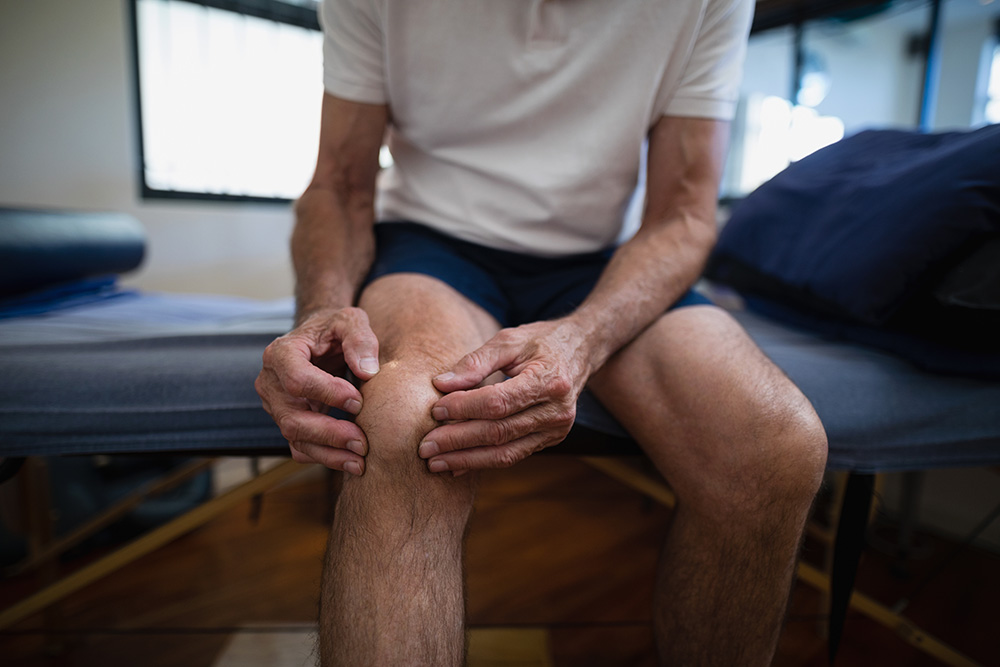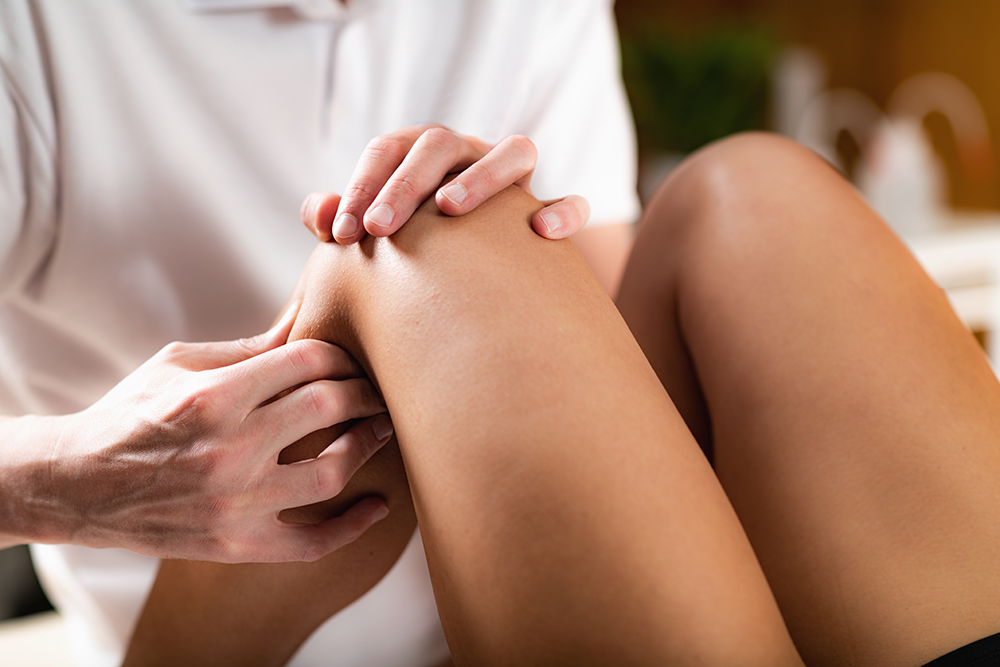Contents
Our legs have a lot of flexibility to move in different directions while supporting the weight of our bodies. The knee joints have a wide range of motion, which we use to walk, squat down, stand up, jump, and twist our legs. Like the other joints in the human body, our knees need a certain amount of healthy movement to stay in good shape. However, overusing them without taking time to rest can result in knee injuries.
People who are young and active are especially likely to develop knee pain from overuse, especially if they exercise without warming up or stretching afterward. Older people are more likely to develop knee pain from arthritis or inactivity. Past injuries or scar tissue from surgeries can cause knee pain as well.
When people develop knee pain, it’s often because the muscles that support their knees aren’t strong enough. Any weaknesses or imbalances in the glutes, quadriceps, hamstrings and lower legs can contribute to knee injuries over time.
In this blog post, we’ll give you step-by-step instructions for 10 exercises that can help you build strength in the muscles that support your knees.
What kinds of exercises can help me build strength around my knees?
The muscles in your glutes, thighs and lower legs provide support for your knee joints. When these muscles are conditioned, your knees won’t have to work so hard to maintain stability. Leg lifts, squats and stepping exercises will help you build strength. You should follow up strengthening exercises with stretches to promote a healthy range of motion and flexibility.
10 physical therapist-approved knee strengthening exercises
Most of the knee strengthening exercises we recommend don’t require any special equipment. Some will work better with resistance bands, which are inexpensive and available at sporting goods or department stores. There are ways to work these muscle groups using weight machines. However, it’s best to start out using little to no added weight and focus on doing more repetitions before you increase resistance.
If you’re experiencing knee pain, exercise with caution. If any of the exercises on this list make your pain worse, stop doing them. Incorporate low-impact cardiovascular exercise like walking, cycling or swimming to promote healthy movement. You should also consider seeing a physical therapist for a personalized exercise program.
Try the following exercises to build strength in the areas that support your knees:
- Straight-leg raises — Sit on the floor with your legs extended. You may lie down with your arms at your sides or lean back, resting on your elbows. Just make sure your lower back is flat against the floor. Plant your right foot on the floor and engage your core as you slowly lift your left leg, keeping your knee straight. Only lift until your raised foot is level with the opposite knee. Then lower your leg back down with control. Do about 15 reps and then repeat with the other leg.
- Leg extensions — Sitting on a chair, keep your back straight and one foot on the floor. Without moving your upper body, raise the other leg so your toe is pointed forward and then lower it back down. You should be using your thigh muscles to move your leg. Do a set of 15 and then switch to the other side. You can increase your resistance by looping a band around the bottom of your foot, holding the ends in your hands, or by attaching the band to the chair leg and wrapping it around the top of your foot.
- Leg press — Lying on your back, extend your legs out long and loop a resistance band around the ball of your right foot. Tighten your grip on the band as you bring your knee up to your chest. Hold the band tight as you extend your leg back to the starting position and then bring it back up. Repeat for about 15 reps and then do the other side.
- Step exercises — Use a stair or a platform up to 6 inches in height. With the step on your right, step your right foot onto it. As you straighten your knee and rise up, keep your hips level so your left foot comes up off the floor. Slowly lower back down onto your left foot. You can put your arm against a wall to steady yourself. Do 15 reps and then repeat with the other side. You can also step forward and backward onto the stair for a slightly different workout.
- Monster walk — You can do these with or without a resistance band. If you’re using one, loop it around the backs of your legs just above your ankles and hold the slack in front of you. Take a small step out to the right and then step back in. You can do several reps on each side or alternate them.
- Single-leg dip — This is a great dynamic exercise that works a few different muscles at once. Stand next to a chair or a railing, using your hand to steady yourself. Hold on to it and point the toes of your opposite foot forward. Let your foot hover over the floor as you squat down slowly and then stand up again. Repeat for a set of 15 and then do a set on the opposite side.
- Hamstring curls — Stand with your feet a couple of inches apart and hold on to a railing or a chair. Lift one foot, curling it back until your knee is at a 90-degree angle, and keep your ankle in a neutral position. Then slowly lower your foot back down. Do 15 reps and then do another set with the other leg.
- Basic squats — Stand with your feet shoulder width apart and your arms hanging down at your sides. Bend your knees until your thighs are parallel to the floor, extending your arms out in front of you. Slowly raise back up to the starting position with your hands at your sides. You’ll feel this exercise in your quadriceps muscles, and it will help to engage your core.
- Multidirectional squats — You can take steps forward, alternating your right and left foot, for each squat repetition. Sometimes these are called split squats. You can also try stepping backward or out to each side. Doing squats in each direction will strengthen different muscles for better knee support.
- Calf raises — Holding a wall to keep yourself steady, stand with your feet shoulder width apart. Slowly raise yourself up onto your toes, lifting your heels off the floor. Then slowly lower back down. Repeat 15 to 20 times.
Get a personalized knee strengthening exercise program at Lattimore PT
Knee pain is a signal from your body that tells you something needs to change. It’s a good idea to slow down and use the RICE method to care for your knee: rest, ice, compression and elevation. After your pain subsides, strengthening the muscles that support your knee will help you keep it at bay over the long term.
If you’re recovering from an injury or if you’re in a lot of pain, you should see a physical therapist for a customized treatment plan. At Lattimore PT, we specialize in musculoskeletal conditions like overuse injuries and movement disorders, which commonly cause knee pain. Our PTs will take the time to listen to you and really understand what you’re experiencing. Then we’ll work with you to create a treatment plan you feel good about.
Are you ready to try something new for your knee pain? Find out if physical therapy is right for you. Contact our team today for more information or to schedule an initial appointment.



